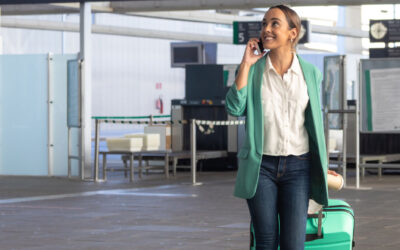What are Modal Shift Opportunities?
Following a sustainable travel programme is an absolute must for any modern-day traveller. As the development of green technology continues to accelerate and more climate-conscious policies are introduced, businesses have more carbon-busting tactics available to them than ever before.
One of the most cost-effective of these tactics involves taking advantage of modal shift opportunities. But what are modal shifts? And how can you make the most of them?
Simply put, a modal shift refers to the change of one mode of transportation to another. By adopting slight adjustments to your travel schedule, mainly by substituting carbon-heavy transport options to lighter ones, you can make a serious difference to your carbon footprint.
Here are our top 5 modal shift opportunities that you can consider to effectively reduce the environmental impact of your travel programme right now.
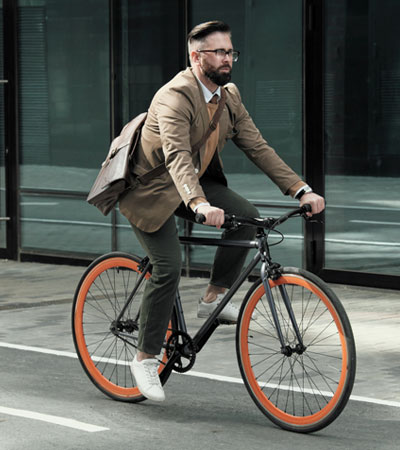
1. Cycling
The ultimate person-powered vehicle since 1817, bicycles are an extremely green alternative to almost every other form of transportation. Although carbon is emitted during the manufacturing process of a commercial bicycle, riding one produces absolutely zero pollution, and the CO2 cost of their production is quickly offset.
Cycling to and from meetings, particularly in urban environments, is brilliantly cost-effective and healthy to boot. It’s a great option for business travellers who are looking for a truly carbon neutral experience. Plus, with over 1040 bicycle-sharing systems across the world*, there’s plenty of choice.
*According to a collection from Wikipedia
2. Train Travel
Trains are a far more sustainable mode of transportation than air travel and, in many cases, can be used to traverse comparably long distances.
A study from the UK Government Department for Business, Energy and Industrial Strategy (BEIS) in 2019 found that a passenger on a domestic train was responsible for 41g of CO2 emissions per kilometre travelled compared to 133g per kilometre for those on a domestic flight.
You don’t have to sacrifice distance either. Travellers from the UK can travel all the way across Europe (and beyond) via train alone, with railway companies increasingly investing in on-carriage technology – such as high-speed Wi-Fi – for those that need to work on the go.
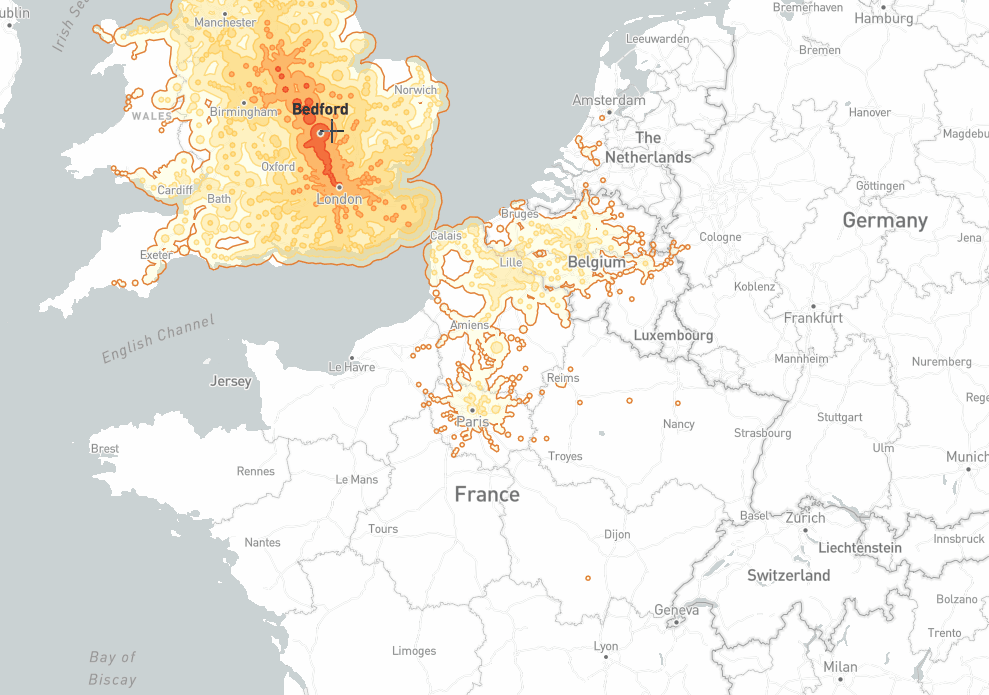
Ever wondered how far you can travel by train throughout Europe? This incredible interactive map from Chronotrains shows the distances you can reach within five hours of every European destination.
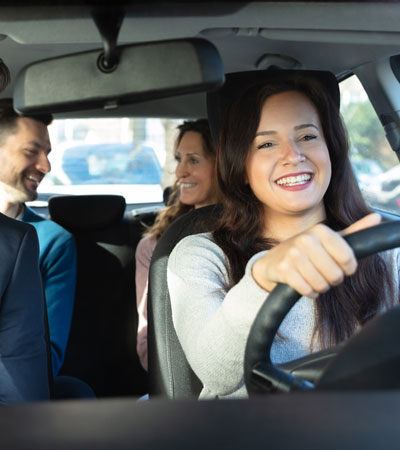
3. Car Sharing
Car sharing has been a staple of the workplace commute for decades. There’s nothing better than getting picked up by a colleague and sitting tight as they drive you to work, even if their music taste leaves a lot to be desired.
Car sharing is a fantastic option for businesses that need to get multiple employees to a local meeting or conference while keeping their carbon emissions low. It’s super straightforward – if one employee fills a standard 5-seater car with his or her colleagues, the business has immediately taken four other cars off the road.
It might be simple, but the difference is huge. According to a 2019 study from BEIS, a car with one passenger accounts for 130g more CO2 emissions per kilometre than a car with four passengers.
WHY IT’S TIME TO TRY EUROPEAN RAIL
Find out why travelling around Europe via train is quickly becoming one of the most popular options among business travellers and why it can have a positive impact on the environment.
4. Electric Vehicles
Though the first electric car was invented all the way back in 1884 by Thomas Parker (the same man responsible for electrifying the London Underground system), it has only been in recent years that electrically operated machines have ben able to manage trips on a scale comparable to their petrol-powered counterparts.
Electric vehicles produce far less greenhouse gas emissions than those powered by petrol or diesel. In fact, according to a MyClimate report, one electric car on the roads can save an average of 1.5 million grams of CO2 annually – that’s nearly 20% of an average home’s energy usage for a year.
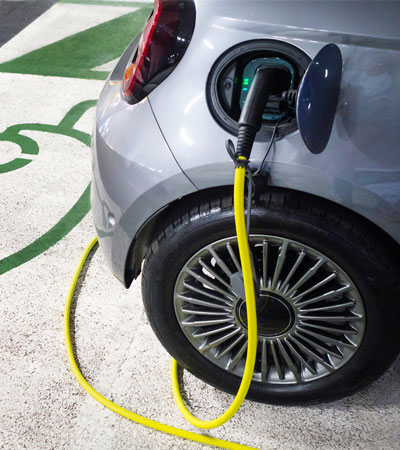

5. Video Conferencing
Modal shifts are not always about changing the way you get from A to B. Sometimes they can be used to eliminate travel altogether. When arranging a meeting, think about whether it is essential it is carried out in person. Can you conduct your business over video conferencing software instead?
Obviously travelling for meetings is an important and often necessary part of business, and it is unlikely to ever go away, but sometimes it can make more sense to stay home and set up a conference call instead.
It’s pretty green too. According to a CO2 calculator from Utility Bidder, two people meeting on an HD quality Zoom call for an hour produces 0.23kg of CO2, equivalent to driving 1.2 miles in a petrol car.
In Summary
By considering modal shift opportunities such as train travel or electric vehicles, businesses can make a positive step towards creating a truly sustainable travel programme.
As shown by the examples above, there are many ways in which businesses can make intelligent choices that are both friendlier for the environment and, in many cases, better for an employee’s health and welfare.
They are easy to implement too. Here at Gray Dawes, our travel experts are passionate about helping businesses figure out greener alternatives during their trips. Get in touch with us to find out how we can help you travel more sustainably or learn more about our LEGACY carbon offset programme in partnership with Forest Carbon.
There’s no doubt that green travel technology will continue to grow, and modal shift opportunities will become more numerous. It’s safe to say that the future of environmentally friendly travel looks brighter than ever.
Related Articles
A New Traveller’s Guide to Better Business Trips
As a new business traveller, going on a business trip can be a daunting prospect. You are expected to ingratiate yourself with people from different cultures and embrace new ways of working. But it is also a highly rewarding experience in which you might meet lifelong connections and find opportunities to advance your career. In this article, we give our top tips to making the most of a business trip both before you leave and during your visit.
Top 6 Places to Visit as an LGBTQ+ Traveller
As an LGBTQ+ professional, travel comes with an extra layer of uncertainty. Though the world is becoming an altogether friendlier and more tolerant place, there are still challenges to overcome and hoops to jump through. So, to celebrate Pride Month 2024, we spoke to our very own Diversity & Inclusion Manager Brit Clayton who gives her top 6 destinations for LGBTQ+ business travellers as told through the prism of her own experiences abroad.
Flight100: Testing The Limits of Sustainable Aviation Fuel (SAF)
The use and effectiveness of Sustainable Aviation Fuel (SAF) remains one of the hottest topics in business travel. Back in 28 November 2023, Virgin Atlantic successfully operated Flight100 – the world’s first commercial SAF flight from London to New York. In this article we extract the key findings of the ground-breaking feat as outlined in the Executive Summary produced by the team behind it all.
